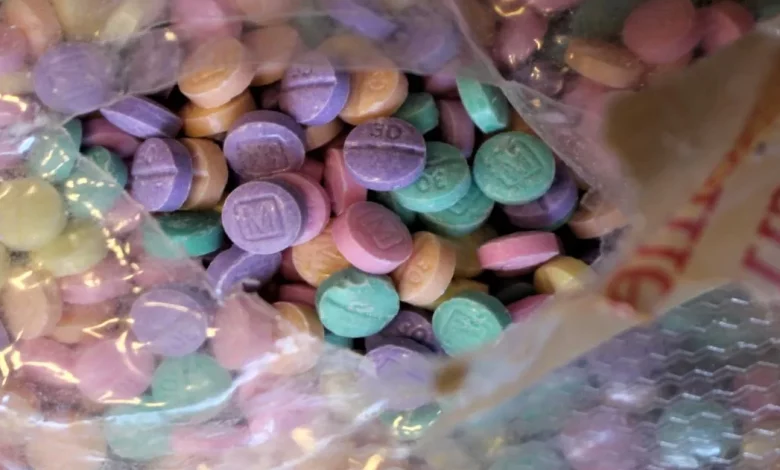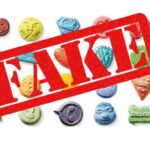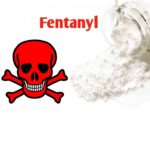5 Facts About Rainbow Fentanyl Pills You Should Know

What are rainbow fentanyl pills?
Rainbow fentanyl pills are brightly colored fentanyl-laced pills that come in a variety of bright colors, shapes, and sizes to deliberately lure young people and drive addiction among children and young adults,
There have been growing media reports about “rainbow fentanyl,” a trend that appears to be a new tactic used by drug cartels to sell highly addictive and potentially lethal fentanyl in a form that resembles candy or other appealing objects to children and young adults.
How Rainbow Fentanyl Is Made
Rainbow fentanyl pills are made with fentanyl, a synthetic opioid that is incredibly potent – 50 times stronger than heroin and 100 times stronger than morphine. A tiny amount of just two milligrams, equivalent to 10-15 grains of table salt, can be fatal. Without proper laboratory testing, it is impossible to determine the concentration of fentanyl in a pill or powder.
The process of making rainbow fentanyl involves the mixing of fentanyl with dyes to produce brightly colored pills or powders. Drug traffickers may be using these colorful additives to evade detection and potentially target teenagers and young adults. However, there is no scientific evidence to support the claim that certain colors are more potent than others, as laboratory testing has not revealed any significant variations in potency.
Health Impact Of Rainbow Fentanyl Pills
Sadly, fentanyl misuse remains the most deadly drug threat in the United States. In 2021, the Centers for Disease Control and Prevention (CDC) reported that 107,622 Americans died from drug overdoses, with 66 percent of those deaths linked to synthetic opioids such as fentanyl. Drug poisoning is the leading cause of death for Americans aged 18-45.
The primary source of fentanyl in the United States is from two criminal drug networks: the Sinaloa Cartel and the Jalisco New Generation Cartel (CJNG). These criminal organizations manufacture and distribute fentanyl and other illicit drugs throughout the United States, contributing significantly to the opioid epidemic.
Why Rainbow Fentanyl Trend is a Huge Public Health Problem?
There are several reasons why rainbow fentanyl pills have become such a problem. One reason is that it is relatively easy to obtain fentanyl on the black market. Illicit manufacturers and dealers can order fentanyl and other synthetic opioids from overseas and then mix them with other drugs or sell them as pills. This makes it difficult for law enforcement to control the supply of these drugs.
Another reason why the rainbow fentanyl pill is a problem is that many people who become addicted to opioids start with prescription painkillers. These drugs are legal and readily available from doctors, but they can be highly addictive. When a person’s prescription runs out or they can no longer afford to buy them, they may turn to illicit opioids, such as fentanyl, to satisfy their addiction.
The misuse of fentanyl and other opioids is a complex issue that requires a multifaceted approach to address. Some strategies that have been proposed to combat this problem include:
1. Increased regulation of prescription opioids: Many experts believe that the overprescribing of opioid painkillers has contributed to the opioid epidemic. By regulating how these drugs are prescribed and dispensed, it may be possible to reduce the number of people who become addicted to opioids.
2. Education and awareness: Many people who become addicted to opioids do not fully understand the risks associated with these drugs. By increasing public awareness about the dangers of opioid misuse, it may be possible to prevent people from becoming addicted in the first place.
3. Improved access to addiction treatment: Many people who are addicted to opioids do not receive adequate treatment for their addiction. By improving access to addiction treatment, including medication-assisted treatment (MAT), it may be possible to reduce the number of people who die from opioid overdose.
4. Increased law enforcement efforts: By cracking down on the illicit manufacturing and distribution of opioids, law enforcement may be able to reduce the availability of these drugs on the black market.
In September 2022, The U.S. Department of Justice Drug Enforcement Administration (DEA) announced the results of an enforcement operation that spanned from May to September and resulted in significant fentanyl seizures across the United States.
As part of the One Pill Can Kill initiative, the DEA and its law enforcement partners seized more than 10.2 million fentanyl pills and approximately 980 pounds of fentanyl powder during the period of May 23 through Sept. 8, 2022. The amount of fentanyl taken off the streets during this surge is equivalent to more than 36 million lethal doses removed from the illegal drug supply. Additionally, 338 weapons were seized, including rifles, shotguns, pistols, and hand grenades.
Of the 390 cases investigated during this period, 51 cases are linked to overdose poisonings and 35 cases link directly to one or both of the primary Mexican cartels responsible for the majority of fentanyl in the United States – the Sinaloa Cartel and the Jalisco New Generation Cartel (CJNG). In addition, 129 investigations are linked to social media platforms, including Snapchat, Facebook Messenger, Instagram, and TikTok. These results build upon the One Pill Can Kill Phase II results announced by DEA Administrator Anne Milgram in December 2021.





